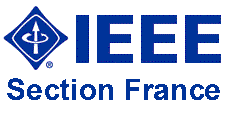|
Computer Vision / Computer Graphics Collaboration Techniques and Applications May, 4-6 2009 INRIA Rocquencourt, France http://acivs.org/mirage2009/ |
|
|
|
Mirage 2009 Abstracts
Invited papers
Paper 101: Model-based computation of plausible locomotion for living and fossilized hominids
imulation is now widely used in biomechanics to investigate human motion control. Classical methods are based on applying knowledge on either kinematic or dynamic models, such as providing the average shape of the angular trajectories while walking. Hence, these methods are based on prerequired measurements performed on living subjects. In paleo-anthropology the problem is different because most of the subjects are fossils. Hence, retrieving a plausible gait for such kind of species is really challenging, as no measurements are available. Most of the approaches consequently compare the shape of bones of various existing species in order to identify the relationship between shape and function. However, these comparative approaches generally focus on some parts of the skeleton while the locomotor system is obviously not limited to one specific joint. Evolutionary robotics was also used to simulate gaits on Australopithecus affarensis (Lucy) by tuning muscle activation patterns. Despite the interesting results, the method was based on important assumptions on muscle attachments and was limited to 2D. We have proposed a new approach that consists in separating the degrees of freedom (DOF) into to parts: the movement of the feet and the joints responsible for moving the legs. The latter DOFs are retrieved by applying an inverse kinematics framework based on global hypotheses on motion control (such as minimizing energy, satisfying kinematic constraints with the ground and taking a rest posture into account). Retrieving a plausible trajectory of the feet is performed by optimization. It consists in optimizing the trajectories of the feet to make the creature walk into predefined footprints while minimizing energy and Jerk. The two layers are connected in an optimization loop which calculates the whole-body motion. This approach has been validated on humans and chimpanzees and has been applied to Australopithecus affarensis (Lucy).
Paper 114: Procedural 3D city modeling: less is more
There is a quickly growing interest in the 3D modelling of cities, both existing and lost. In this talk some recent methods are discussed, that are intended to support such massive 3D modelling exercises. Several aspects are highlighted, depending whether the focus lies on the precision of 3D measurements (as in digital surveying), or the realism of visualisation. Underlying our strategies is a procedural modeling approach, which yields very compact but semantically enriched descriptions of buildings, for specific architectural styles. Attention is also paid to scalable data capture for these different applications. For instance, for digital surveying, the capture of 3D data along hundreds of km of road is necessary. We have designed a camera-equipped van with the necessary software to do so. In the case of modeling monuments - that require special attention given their rather complicated shapes - extra images are gathered automatically, without even having to specify the name or the existence of these monuments. Also, information about them is looked up automatically, e.g. to find out about the corresponding architectural style. As example case for the modelling of large-scale virtual cities, the Rome Reborn 2.0 project will be discussed, that has produced a model of the entire ancient city of Rome as it was around the 5th century AD.
Paper 185: Non-Parametric Latent Variable Models for Shape and Motion Analysis
on-Parametric Latent Variable Models for Shape and Motion Analysis Abstract: Dimensionality reduction is a popular approach to dealing with high dimensional data sets. It is often the case that linear dimensionality reduction, such as principal component analysis (PCA), does not adequately capture the structure of the data. In this talk I will discuss Probabilistic Non-linear Latent Variable models in the context of 3D human body tracking, 3D shape recovery from single images, character animation and classification. First, I will describe how to use Gaussian Process Latent Variable models (GPLVMs) for learning human pose and motion priors for 3D human body tracking from monocular images. I will then show how to combine multiple local models to model the space of possible deformations of objects of arbitrary shapes, but made of the same material. This will allow us to perform monocular 3D shape recovery in the presence of complex deformations of poorly textured objects.
In dimensionality reduction approaches, the data is typically embedded in a Euclidean latent space. However for some data sets, such as human motion, this is inappropriate. We present a range of approaches for embedding data into non-Euclidean latent spaces that incorporate prior knowledge. This allows us to learn models suitable for motion generation with good generalization properties. Finally I'll present a new learning paradigm that mitigates the problem of local minima by performing continuous dimensionality reduction. By introducing a prior over the dimensionality of the latent space that encourages sparsity of the singular values, our method is able to simultaneously estimate the latent space and its dimensionality.




